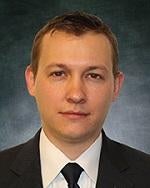Addressing enablement and written description issues in the context of a priority challenge, the Patent Trial and Appeal Board (PTAB) found that the challenged claims were not entitled to the benefit of the parent application and thus were anticipated by an intervening reference. Daiichi Sankyo Company, Ltd. v. Alethia Biotherapeutics, Inc., Case No. IPR2015-00291 (PTAB, June 14, 2016) (Snedden, APJ).
The challenged patent’s claims are directed to a method of impairing osteoclast differentiation that includes administering to a subject an antibody or antigen binding fragment that specifically binds to human or murine Siglec-15. The challenged patent is a continuation in part of an earlier-filed patent. The petitioner challenged certain claims as anticipated by a single prior art reference. The patent owner did not dispute that the prior art reference disclosed the limitations of the claims, instead challenging only the availability of the reference as prior art. Thus, the question of anticipation rested on (1) whether the claims were entitled to the benefit of priority of the parent application, and (2) whether the reference could be removed as prior art under 35 USC §102(a).
With respect to the priority claim, the PTAB considered whether the parent application adequately described and enabled one of skill in the art to practice the claimed method, as required by 35 USC §112. As to the enablement issue, the PTAB considered whether one skilled in the art could practice the claimed method without undue experimentation, relying on the Wands factors for guidance. The PTAB focused on the functional properties of the claimed anti-Siglec-15 antibodies, since the claims required the antibody to have a desired therapeutic effect when administered to a subject for medical treatment.
In its analysis, the PTAB noted that it was known at the time of the parent application that one could obtain an antibody to specifically bind to any particular target antigen through routine use of well-known methods. However, the PTAB cautioned that producing an antibody to a known antigen is quite distinct from producing an antibody to the same antigen and having a desirable and particular therapeutic effect. In this case, the parent application generally disclosed gene and protein sequences of Siglec-15, described inhibitory compounds to osteoclast differentiation, and disclosed general methods for making and screening antibodies against a target protein. The parent application did not disclose anti-Siglec-15 antibodies effective to inhibit bone resorption or impair osteoclast differentiation, however, and did not provide any structural information of an antibody that binds to Siglec-15, or epitopes or unique antigenic regions thereof. After considering the disclosure of the parent, the PTAB concluded that practicing the method described in the challenged claims as of the time of the parent application would have required excessive experimentation, characterizing the parent application as a mere starting point for further research.
Turning to written description, the PTAB addressed the patent owner’s reliance on “the antibody rule,” whereby an applicant can satisfy the written description requirement for an antibody by disclosing a fully characterized antigen to which such antibody binds. In finding that the parent application lacked adequate written description of the claimed method, the PTAB noted that the US Court of Appeals for the Federal Circuit has on several occasions distinguished between claims not involving functional claim language and claims that contain such language. In this case, because the claims at issue contain functional language requiring certain biological properties of the recited antibody, the disclosure of a fully characterized antigen is not sufficient to meet the written description requirement.
Finally, the PTAB considered the patent owner’s attempt to antedate the prior art reference by establishing earlier conception accompanied by diligence towards a reduction to practice. Upon examining the patent owner’s records, the PTAB concluded that, as of the critical date of the prior art document, the patent owner was still conducting trial and error experimentation to identify antibodies having the claimed functional properties. Therefore, the patent owner could not have been in possession of antibodies that worked for their intended purpose as recited in the challenged method claims.
Practice Note: This case illustrates how a successful challenge to a priority claim can permit intervening prior art to be used effectively in a patent challenge. Such use can be particularly important in the pharmaceutical and biotechnology industries, where the level of unpredictability is high.



 />i
/>i
